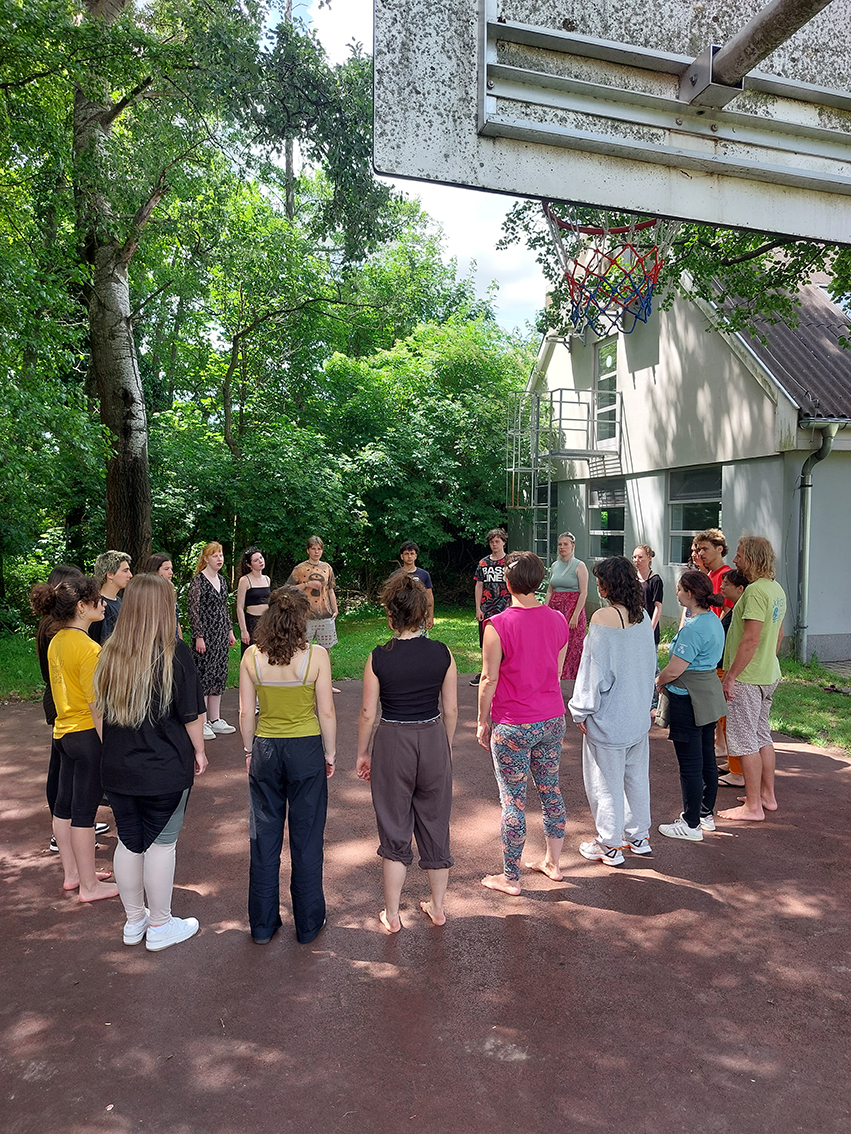The Game of 7
Download the methods
To download the methods, click here
Target group
No. of pax
Environment
Time needed
Materials
none
Objective/aim
The aim of the activity is to develop attention span and reaction time, while playing with the topic of failure.
Step by step instructions
Step 1
Setup!
1 minute
Participants are divided into group(s) of 5-9 people, standing in circles, facing the inside of the circle. One person starts with passing the “impulse” by tapping their left or right shoulder while saying loudly “One!”. The person who is standing on the side of the shoulder tapped – is the next one to act. They tap either their left or right shoulder, while saying loudly “Two!”. Then the same happens, until the number “Seven!” is reached. After that – the next person starts from “One!”.
Step 2
Challenge!
1 minute
Instead of saying “Seven!” – the seventh person jumps up in silence, arms along their body. The signal goes “through” them to the next person, who then starts with “One!”. For example, if the person saying “Six!” taps their left arm, the person to their left jumps up in silence, and then the next person to the left says “One” and taps their shoulder as in step 1.
Step 3
Failure?
3 minutes
A person makes a mistake when instead of jumping in silence while being the seventh they say “Seven!” or if they get the number order wrong. Everyone is a judge of their own mistakes – we avoid pointing fingers but allow them to realise they messed up. When someone realises they have made a mistake – they make one round running around the circle, while shouting happily “Yes! I’ve made a mistake! Hurray!” – or something along these lines. After running, they rejoin the group. Meanwhile the group can continue playing, omitting the running person.
Step 4
3-10 minutes
Encourage participants to pick a tempo and stick to it. Now there is one additional mistake condition – skipping the tempo by reacting too slowly.
Step 5
3-10 minutes
If you play in two or more groups – if someone makes a mistake – they run around shouting happily, but then join the group with the least number of participants.
Step 6
The game can last indefinitely – there is no “winning” condition.
Tips for the trainer
Presentation and explaining the rules
It is easier to show the game than explain it with words. I usually explain to one group, ask the others to observe and then make a round through the groups to make sure everyone understands Step 1 before moving further. The same goes for every other step. Once the game starts – it is better to explain next steps to one group at a time.
Not feeling happy?
If someone does not want to shout – it is ok! They can express their emotions any other way – by jumping or moving their arms while running or humming to themselves.
You can also opt not for “Hurray, I’ve made a mistake” but “Ohhh noooo, I’ve made a mistake” shouted in a failure mocking way.
How to make it more challenging?
1. If there are more languages spoken in your group – after Step 5 you can propose the participants to count in their native language. Bonus points for using numbers they’ve picked up in the game!
2. You can exchange any number with any activity – for example instead of saying “Two!” – make a pirouette or say one of the “Youth Demands”. This way the game can be transformed into a performative act.
3. Speed up the tempo! The game gets more challenging when played at high speed. Make sure that the group adapts the tempo to the most resisting participants.
How to make it less challenging?
1. Start slow!
2. Emphasis that everyone is responsible for recognising their own mistakes.
Alternative
If participants you play with can’t stand or jump – the game can be played while seated or lying down. Exchange the jump for a motion that’s in your participant’s area of capability.
Your participants cannot hear? Ask them to show the numbers with their fingers or use their National Sign Language.
Younger participants? Let them count to 4 instead of 7.
Comment
Source
This is a variation of the Clowning game we use in circus practice in order to develop awareness and reaction time. In improvisation and on stage – quick wit is the king. We learn to stay vigilant, react swiftly but also – not get into the routine by adapting your behaviour to the varying rules.
Step 5, multilingual and inclusive variants designed by Adam Banach.


